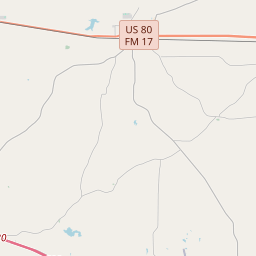Mineola Black Spiders
Historical marker location:






IN THE 1800s AND INTO THE FIRST HALF OF THE TWENTIETH CENTURY, AFRICAN-AMERICAN BASEBALL TEAMS PLAYED SEPARATELY FROM WHITE TEAMS. THE COMMUNITY OF MINEOLA, THOUGH SMALL IN POPULATION, HAD BOTH WHITE AND BLACK BASEBALL TEAMS. THE MINEOLA BLACK SPIDERS WAS COMPOSED OF AFRICAN-AMERICAN MEN AND YOUTH FROM THE TOWN. THE BALLPLAYERS WORE SOLID GRAY UNIFORMS AND PLAYED AT EPPERSON PARK IN SOUTH MINEOLA, IN ADDITION TO TRAVELING TO GAMES IN DALLAS, COMMERCE, SHREVEPORT (LOUISIANA), AND OTHER PLACES. HOME GAMES SOMETIMES ATTRACTED AROUND 200 SPECTATORS.
VERNON KLINGAMAN, WHO MOVED TO TEXAS IN THE LATE 1920s, SETTLING IN MINEOLA, SOON BECAME INVOLVED WITH THE TEAM. HE EXPANDED THE ROSTER, OPENING IT TO NON-RESIDENTS, AND CHANGED THE NAME TO THE TEXAS BLACK SPIDERS. IN 1932, THE PLAYERS DEPARTED MINEOLA FOR THE MIDWEST, BECOMING A BARNSTORMING TEAM, STAGING EXHIBITION GAMES IN VARIOUS LOCATIONS. THAT YEAR, THE TEAM UNDERWENT A NAME CHANGE, BECOMING THE MASON CITY BLACK BATS. THEY HEADQUARTERED IN IOWA, THOUGH MOST MEMBERS WOULD RETURN TO THE SPIDERS’ SQUAD, WHILE OTHERS MOVED BACK TO TEXAS.
THE BLACK SPIDERS GAINED A REPUTATION AS BEING ONE OF THE FASTEST TEAMS FROM THE SOUTH. THEY WERE ALSO VERY SUCCESSFUL; IN 1936, THE SPIDERS’ RECORD WAS 34-1. HOWEVER, BY 1937, THERE WAS A SUBSTANTIAL TURNOVER IN TEAM PERSONNEL. THE BLACK SPIDERS FIELDED A TEAM IN 1938, BUT DISBANDED AFTERWARD. TODAY, THE TEAM IS MOSTLY FORGOTTEN IN MINEOLA. HOWEVER, THE BLACK SPIDERS REMAIN A SIGNIFICANT PART OF THE COMMUNITY’S HISTORY AS A BLACK BASEBALL TEAM THAT BECAME A SUCCESS LOCALLY AND IN THE MIDWESTERN UNITED STATES
As one of the most visible programs of the Texas Historical Commission (THC), historical markers commemorate diverse topics in Texas history, including: the history and architecture of houses, commercial and public buildings, religious congregations, and military sites; events that changed the course of local and state history; and individuals who have made lasting contributions to the state, community organizations, and businesses.
In the late 19th century, Texas became known for its cattle drives, in which cowboys would move herds of cattle from Texas to railheads in Kansas and other northern states. The cattle drives were dangerous and difficult work, but they played a key role in the development of the American cattle industry.
In the early 1800s, the region attracted settlers from the United States who were drawn to the lush forests and abundant resources. The first permanent European-American settlement was established in 1846, and it was named Quitman after John A. Quitman, a prominent politician of that time.
During the Civil War, Wood County played a significant role in supporting the Confederacy. Many residents enlisted in the Confederate Army, and the area became a center for military recruitment and training. After the war, the county suffered economically, but with the introduction of the railroad in the late 19th century, the economy began to recover.
Wood County's economy primarily relied on agriculture, with the growth of cotton, corn, and timber industries. The establishment of sawmills and the development of the timber industry brought prosperity to the area. In the early 20th century, the discovery of oil and gas reserves further fueled the county's economic development.
Today, Wood County continues to be an important agricultural and industrial center in Texas. The county's history is evident in its charming small towns, historic sites, and natural beauty. The strong sense of community and appreciation for the region's heritage are still evident today, making Wood County a vibrant and inviting place to visit or live.
Wood County Timeline
This timeline provides a glimpse into the major events and milestones that have shaped the history of Wood County, Texas.
- 1850: Wood County is established by the Texas legislature.
- 1852: The first courthouse in Wood County is built in Quitman.
- 1860: The population of Wood County reaches 4,867.
- 1875: The railroad reaches Wood County, boosting economic growth.
- 1895: The county seat is moved from Quitman to Mineola.
- 1920: The population of Wood County peaks at 19,109.
- 1930: The Great Depression hits Wood County, causing economic hardship.
- 1958: Lake Holbrook is completed, providing a recreational area for residents.
- 1970: Wood County's population decreases to 12,230.
- 1983: Holly Lake Ranch, a gated residential community, is established in Wood County.
- 2000: The population of Wood County surpasses 37,000.
- 2019: Wood County experiences steady growth and continues to be a thriving community.